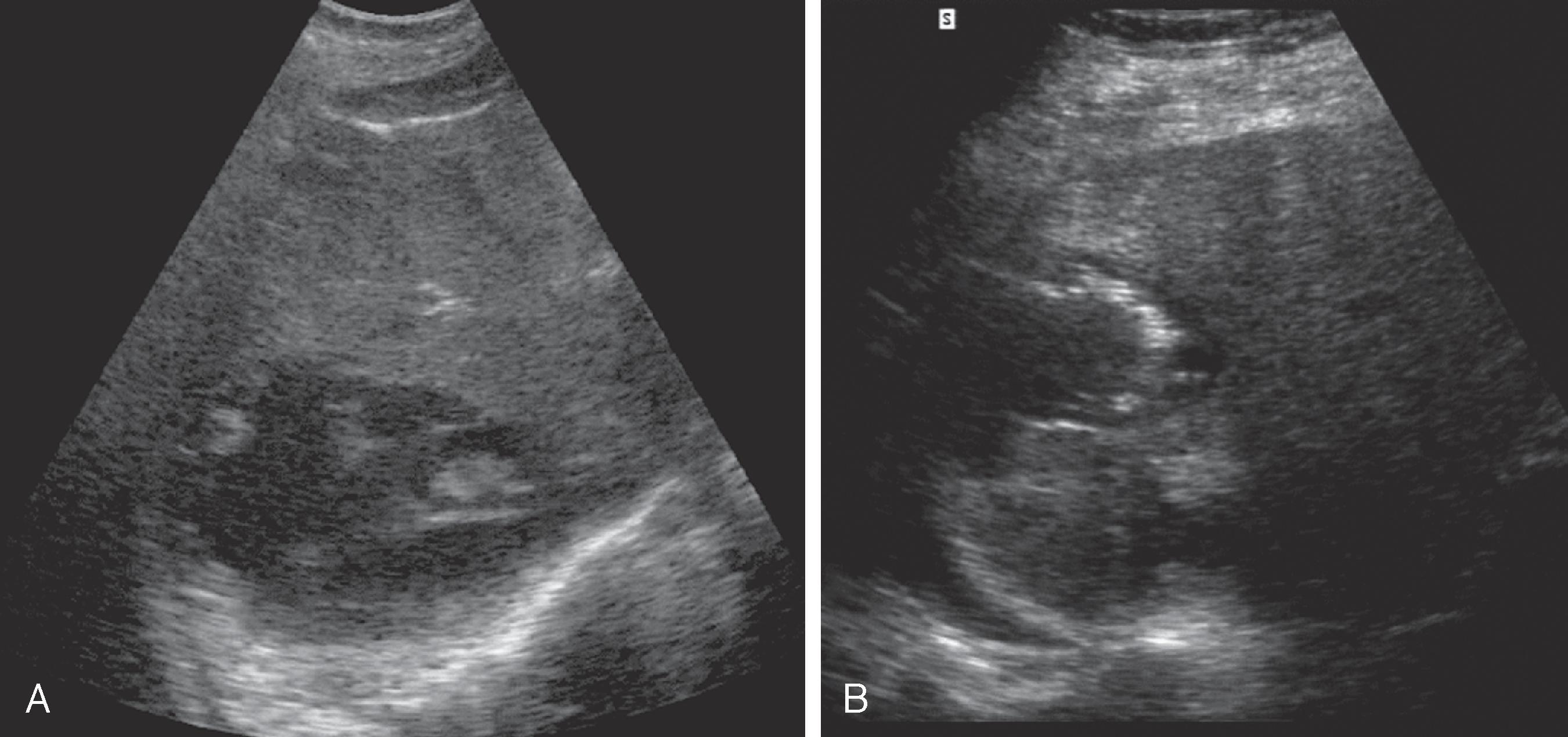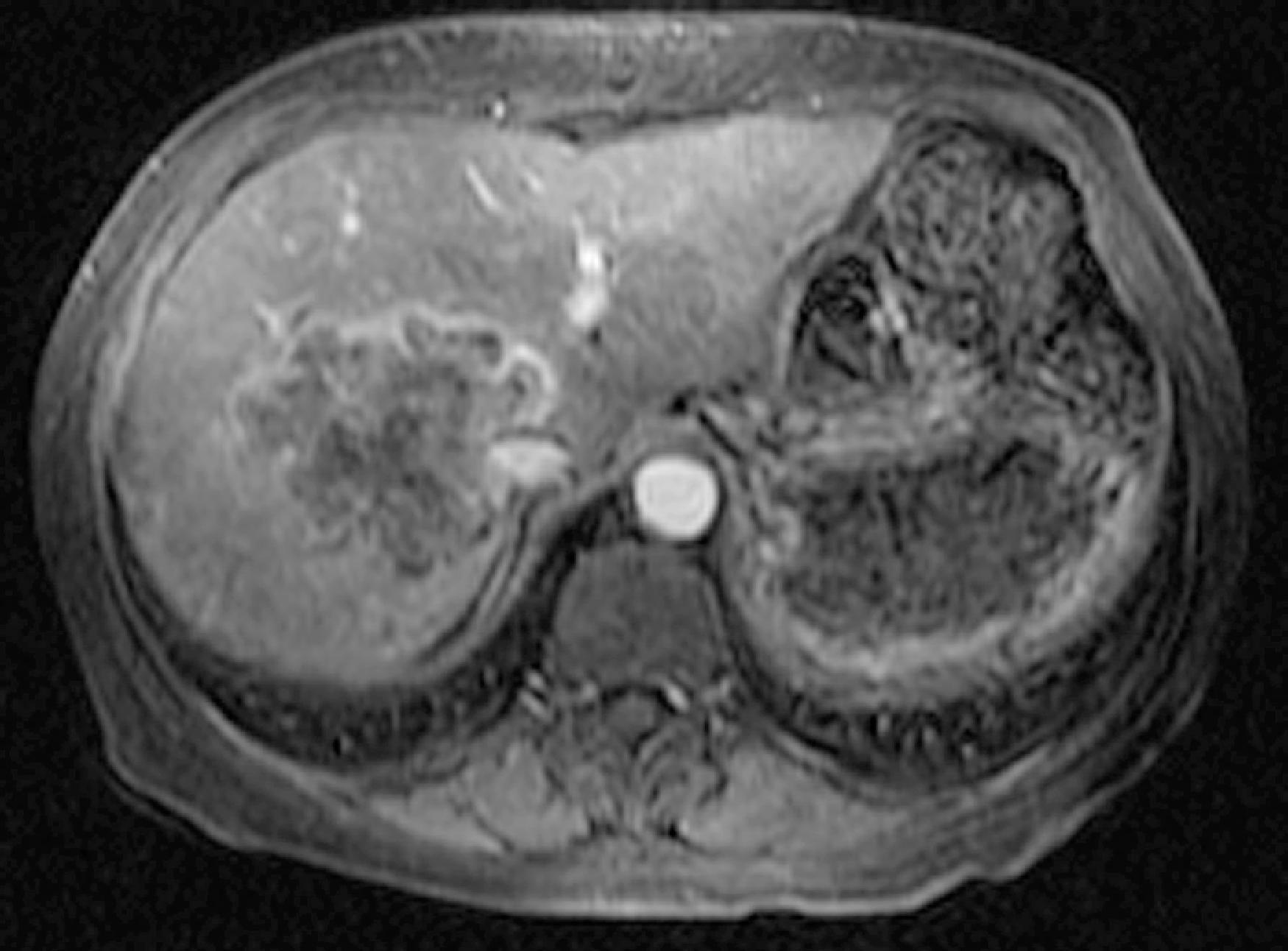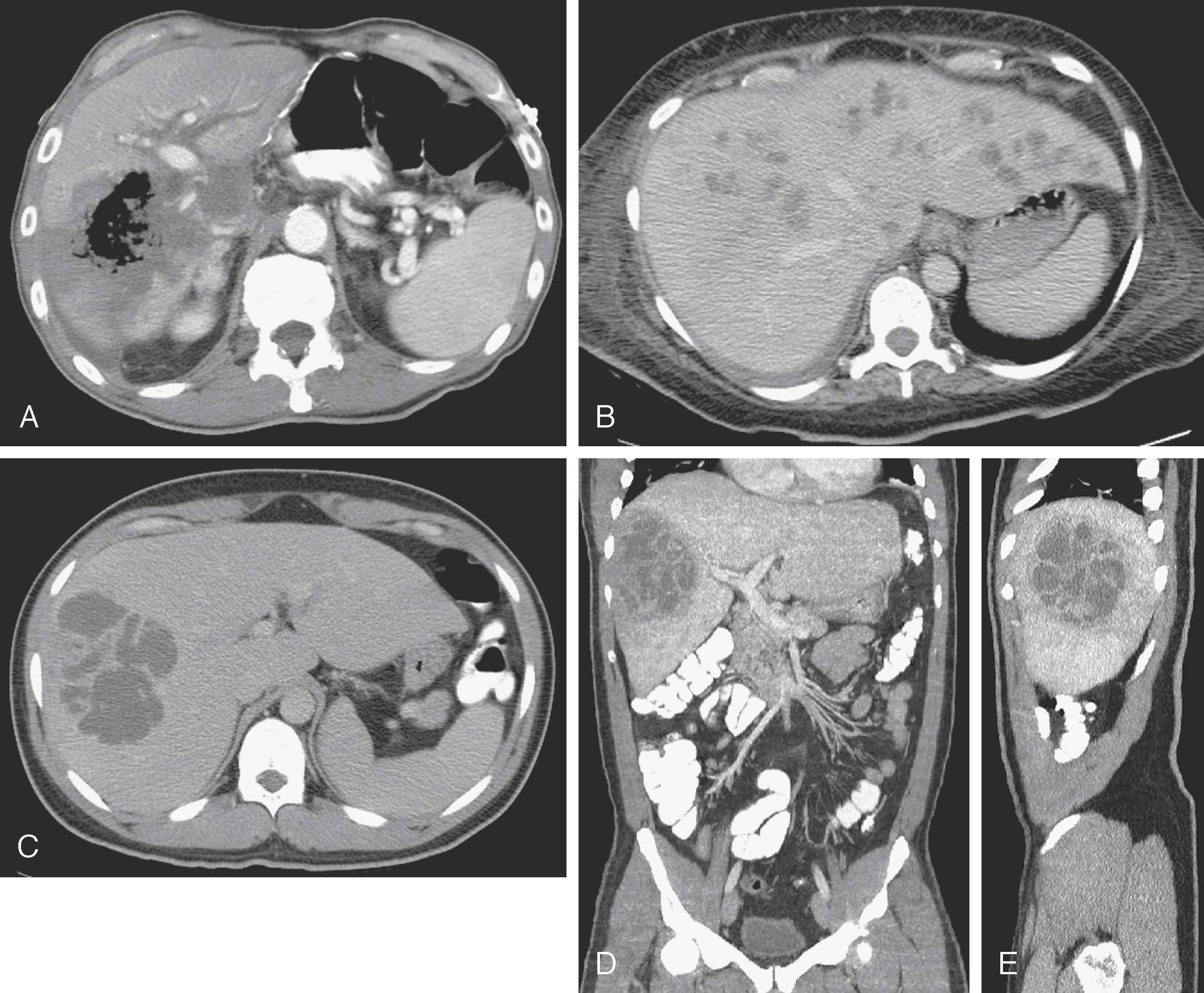Physical Address
304 North Cardinal St.
Dorchester Center, MA 02124
Technologic advances have significantly enhanced the role of radiology in the detection, characterization, and management of focal infectious diseases of the liver. Today, all cross-sectional techniques allow highly accurate detection of focal hepatic infections. Computed tomography (CT) is particularly helpful in revealing the presence of calcifications and gas and in detailing the enhancement pattern. With its multiplanar capacity and sensitivity to small differences in tissue composition, magnetic resonance imaging (MRI) is a useful tool to diagnose and to characterize lesions such as hepatic abscess, hydatid cyst, and candidiasis. The impact of imaging is particularly dramatic for pyogenic abscess; early diagnosis and imaging-guided percutaneous drainage have markedly reduced both the mortality rates (from 40% to 2% of cases) and the need for surgery. , This chapter is a review of the radiologic and pathologic findings in a variety of focal hepatic infections, including abscesses, parasitic diseases, and fungal diseases.
Ascending cholangitis is the most common cause of pyogenic hepatic abscess, and cholangiography has become an important aid to diagnosis in many cases. Percutaneous transhepatic cholangiography and endoscopic retrograde cholangiography can accurately define the level and cause of biliary obstruction; they are the first step in biliary drainage procedures and can accurately define biliary anatomy for the surgeon. These procedures increase intrabiliary pressure and can precipitate deterioration of a patient who is already septic. Accordingly, biliary drainage procedures should be anticipated. Magnetic resonance cholangiopancreatography is an important tool in diagnosis of obstructive biliary tract lesions.
Real-time ultrasound can detect hepatic abscesses as small as 1.5 cm with a sensitivity of 75% to 90%. Pyogenic hepatic abscesses are extremely variable in shape and echogenicity. They are usually spherical ( Fig. 55.1 ) or ovoid but may be lobulated or lentiform. Mural thickness is variable, and the wall typically is irregular and hypoechoic. On sonography, abscesses appear anechoic (50%), hyperechoic (25%), or hypoechoic (25%). Septa, fluid-fluid levels, internal debris, and posterior acoustic enhancement may also be seen. Early lesions tend to be echogenic and poorly demarcated; they may evolve into well-demarcated, nearly anechoic lesions. If gas is present in an abscess, brightly echogenic reflectors with posterior reverberation artifact may be noted.

The sonographic differential diagnosis includes amebic or hydatid infection, necrotic or cystic neoplasm, hematoma, complicated biloma, and simple cyst with infection.
Hepatic abscesses, like most other focal hepatic processes, prolong T1 and T2 relaxation times. , At MRI, air within the abscess appears as a signal void and is therefore more difficult to differentiate from calcifications. However, the shape and location (air-fluid level) should enable the correct diagnosis. After administration of gadopentetate dimeglumine (Gd-DTPA), abscesses typically show rim enhancement ( Fig. 55.2 ), which is secondary to increased capillary permeability in the surrounding liver parenchyma (the double target sign). Small lesions (<1 cm) may enhance homogeneously, mimicking hemangiomas. , Abscess wall enhancement on dynamic postgadolinium images may be considered a distinctive feature of pyogenic liver abscesses. Abscess wall shows a fast and intense enhancement that persists on portal venous and late phase images. Some of the lesions may contain internal septations, which also reveal persistent enhancement on late phase images. , Perilesional edema, shown as high signal on T2-weighted images, is associated with 50% of abscesses. However, it may also be seen in 20% to 30% of patients with primary or secondary hepatic malignant neoplasms. Therefore, the presence of perilesional edema can be used only to differentiate a hepatic abscess from a benign cystic hepatic lesion. Resolution of perilesional edema may indicate response to therapy. ,

By virtue of its good spatial and contrast resolution, CT is the single best method for detecting hepatic abscess, with a sensitivity as high as 97% ( Fig. 55.3 ). On CT scans, abscesses appear as generally rounded masses that are hypodense on both contrast and noncontrast scans. The attenuation ranges between 0 and 45 HU and thus overlaps with the appearance of cysts, bilomas, and hypodense neoplasms. Most have a peripheral rim or capsule that shows contrast enhancement in a pattern similar to that seen on MRI (see Fig. 55.1 ). Most abscesses are sharply defined, but a minority have a grossly lobular contour and circumferential “transition zones” of intermediate attenuation.

Another helpful finding is the transient segmental or wedge-shaped enhancement of the hepatic parenchyma surrounding an abscess on the arterial dominant phase of a contrast-enhanced dynamic CT scan.
Some abscesses show the cluster sign (see Fig. 55.3C–E ), in which small, pyogenic abscesses appear to cluster or aggregate in a pattern suggesting coalescence into a single large cavity.
All of these findings are nonspecific and require aspiration for diagnosis. Central gas (see Fig. 55.3A ), as either air bubbles or an air-fluid level, is a specific sign, but it is present in less than 20% of cases. A large air-fluid or fluid-debris level is often associated with communication with the gut.
Approximately 10% of the world's population is infected with Entamoeba histolytica , which causes more deaths than any other parasite with the exceptions of malaria-causing plasmodia and schistosomes. Less than 10% of infected individuals, however, are symptomatic. Amebic liver abscess is the most common extraintestinal manifestation, occurring in 3% to 7% of this population.
Become a Clinical Tree membership for Full access and enjoy Unlimited articles
If you are a member. Log in here